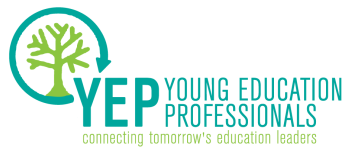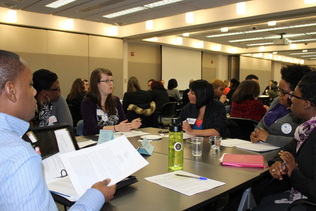
Education is the silver bullet. Education is everything. We don't need little changes; we need gigantic, monumental changes. Schools should be palaces. The competition for the best teachers should be fierce. They should be making six-figure salaries. Schools should be incredibly expensive for government and absolutely free of charge to its citizens, just like national defense. That's my position. I just haven't figured out how to do it yet.
In an idealized world, this would be the case. Schools would offer wraparound services, giving children access to the personalized academic, social, and emotional help they need for success. Students would be prepared for and guided into postsecondary programs, including those in career and technical education, that best meet their talents and desires. Our teaching force would be elite and better respected, mentioned in the same breath as doctors and lawyers, and compensated accordingly. Inner-city schools would be among the best in the country and help break disadvantaged students, who are disproportionately black and Hispanic, out of the cycle of poverty. There wouldn’t be a “skills gap” in our economy while we have an unemployment rate that is over 5 percent, over 10 percent for blacks, and nearly 7 percent for Hispanics.
As Sam said, bringing about these sorts of changes would be expensive. Yet the United States is already near the top in terms of education spending. In 2008, we spent more than 7 percent of our gross domestic product on education. That rate was the fifth-highest among countries in the Organisation for Economic Co-operation and Development, behind only Iceland, South Korea, Israel, and Norway. However, the federal government only accounts for 10 to 15 percent of that education spending, with the rest roughly split evenly between the state and local levels. In fact, in 2013, only 1 percent of our federal budget was reserved for education. And in President Barack Obama’s recent budget request for fiscal year 2016, which will find very little support in the Republican-controlled Congress, the U.S. Department of Education receives less than 1.8 percent of proposed funding. Out of a whopping $3.99 trillion, ED would only get $70.7 billion, and that’s in the idealized budget of a Democratic president. By comparison, the proposal would provide the U.S. Department of Defense with $585 billion.
So if we already spend so much on education, how can we start to make things better? One of the biggest reasons for funding disparities in our schools is the way that local education dollars are raised. Generally speaking, local funding comes from property taxes, meaning that higher-income areas with higher property values generate much more money for their schools. To address this difference, state education dollars, which come primarily from sales taxes and state-level income taxes, should be dedicated to at least equalizing funding levels for low-income urban and rural areas, if not providing them with even more funding than their wealthier counterparts. For its part, the federal government should focus on spurring large-scale, systemic improvements. Improving the talent pipeline for teachers and school leaders, offering strong incentives for working in disadvantaged schools, and funding research and pilot programs that find innovative solutions to tough problems are just a few examples. The federal budget should also reflect education as a greater priority in this country. That 1 percent should be 3 or even 5 percent, so that we can ensure that we have one of the best education systems in the world.
Unfortunately, this is not the type of system we have today. Poor schools don't have the most resources, many states aren't ensuring equitable funding, and the federal government tries to make up the difference with bulky formula funding programs. Rather than continuously trying to put federal Band-Aids on our gashed education system, we need to stitch it up with a new, holistic approach that will better align funding with our priorities. According to a recent poll by the Pew Research Center, people ages 18 to 29 list our educational system as their top policy priority for President Obama and Congress, even above the nation’s economy, and for good reason. But it will be difficult to make significant changes without commitment and cooperation at all levels of government. So what are we to do? Like Sam Seaborn said, we haven’t figured it out yet. But we need to.
Phillip Burgoyne-Allen is a legislative assistant at an education law firm. Reach him via email or Twitter.





 RSS Feed
RSS Feed